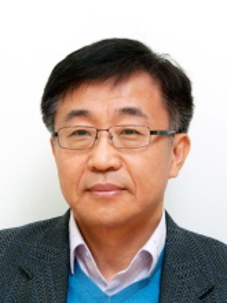Plenary Speakers

Prof. Mark Rodwell
USCB
USA
“100-300GHz MIMO Communications: Transistors, ICs, Arrays, and Systems”
Bio: Mark Rodwell holds the Doluca Family Endowed Chair in Electrical and Computer Engineering at UCSB and directs the SRC/DARPA ComSenTer Wireless Research Center. His research group develops high-frequency transistors, ICs and communications systems. He and his collaborators received the 2010 IEEE Sarnoff Award, the 2012 Marconi Prize Paper Award, the 1997 IEEE Microwave Prize, the 2009 IEEE IPRM Conference Award, and the 1998 European Microwave Conference Microwave Prize.

Prof. Songcheol Hong
KAIST
Korea
“Subarray hybrid beamforming front-end ICs for millimeter-wave communications and high resolution sensings “
Abstract: Millimeter-wave 5G wireless communication adopts a subarray hybrid beamforming structure in the base stations, since it provides a simple front-end structure to drive many antenna arrays. It is also expected to be used in millimeter wave B5G and 6G communications more actively because the simpler structure is necessary in the higher frequencies. Especially, the need of joint communication and sensing (JCAS) in B5G communications causes the structure become very important to support many antenna arrays efficiently. Since it is basically consisted of several RF beamforming structures, many RF beamforming ICs are used to implement the hybrid beamforming front-end.
In this talk, it will be explained why the hybrid front-end structure with several RF beamforming ICs is the simplest and widely used compared to the other ones. The beamformer ICs with the key RF subcircuits, such as a power amplifier, a low noise amplifier, a phase shifter, a variable gain amplifier will be presented for millimeter-wave 5G communication. Especially the beamforming phase shifters in the ICs are presented and compared for B5G communications. A high angular resolution MIMO radar structure with the phased subarray antennas is also introduced, which might be used for JCAS in B5G and 6G communications.
Bio: He received the B.S and M.S degrees in Electronics Engineering from Seoul National University in 1982 and 1984, respectively and the Ph.D degrees in Electrical Engineering and Computer Science from the University of Michigan in 1989. He is currently a Professor in the School of Electrical Engineering at the KAIST( Korea Advanced Institute of Science and Technology) and KT-chaired professor. He received Qualcomm Faculty Award 2019. He visited EECS Department of Stanford University as a visiting professor in 1997. He worked with Samsung Microwave Semiconductor in Milpitas, CA. He served as a dean of research affairs and a director of KI-IT convergence in KAIST. He is currently a director of millimeter wave radar-communication research center (MiraCom-RC) supported by Korean government. He is currently a member of IEEE, NAEK, KIEES and KITE. He has served as a board member of Techno-park of Daejeon Metropolitan city for 15 years. He served as general chair of RFIT 2017 supported by IEEE and TPC chairs of APMC 2013 and GSMM 2014. He published more than 300 technical papers and 150 patents. He is currently interested in RFICs and especially in millimeter wave Front-end ICs for 5G communications and intelligent high resolution radars.

